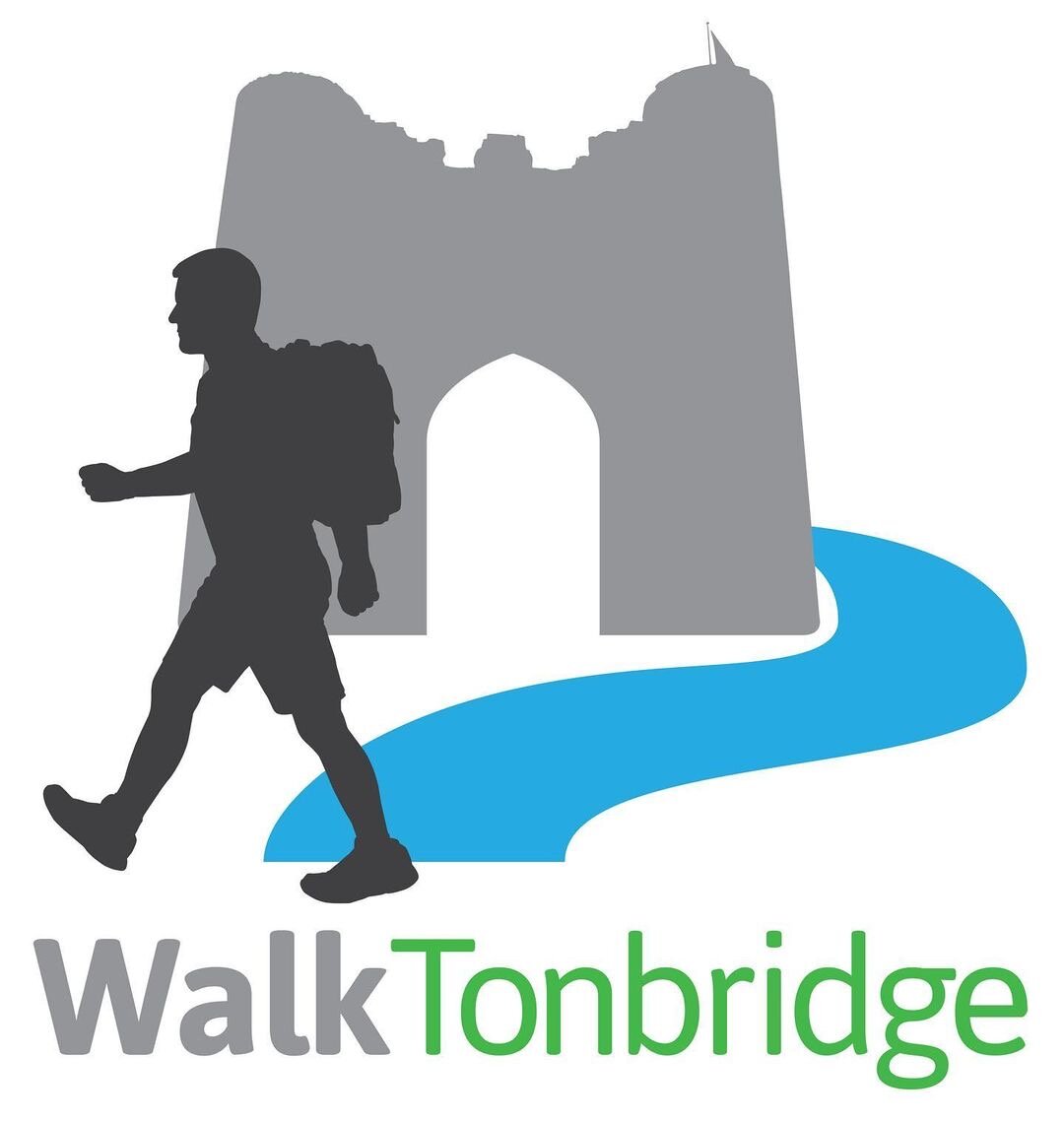Walk 6: The ‘Darling Buds’
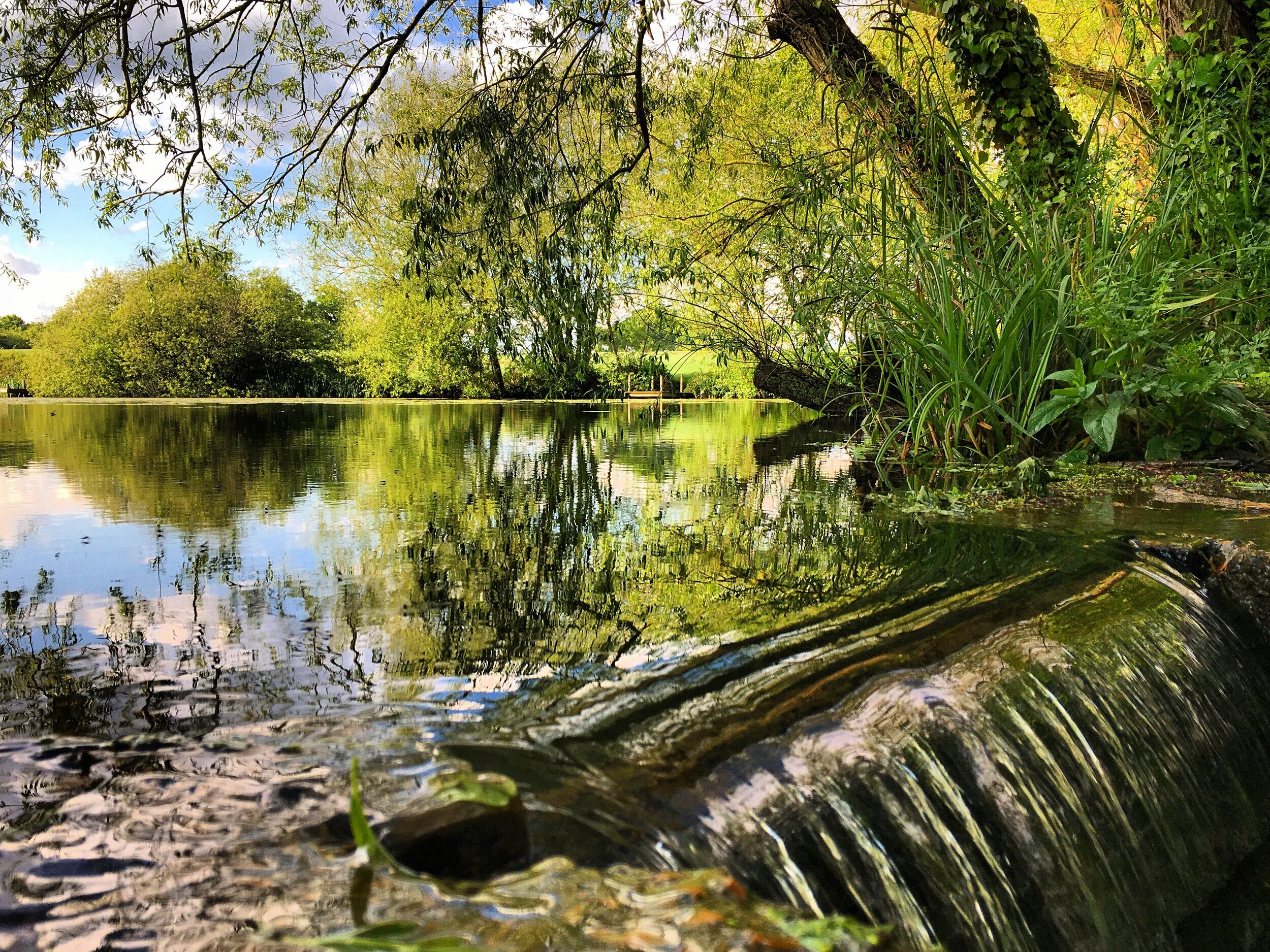
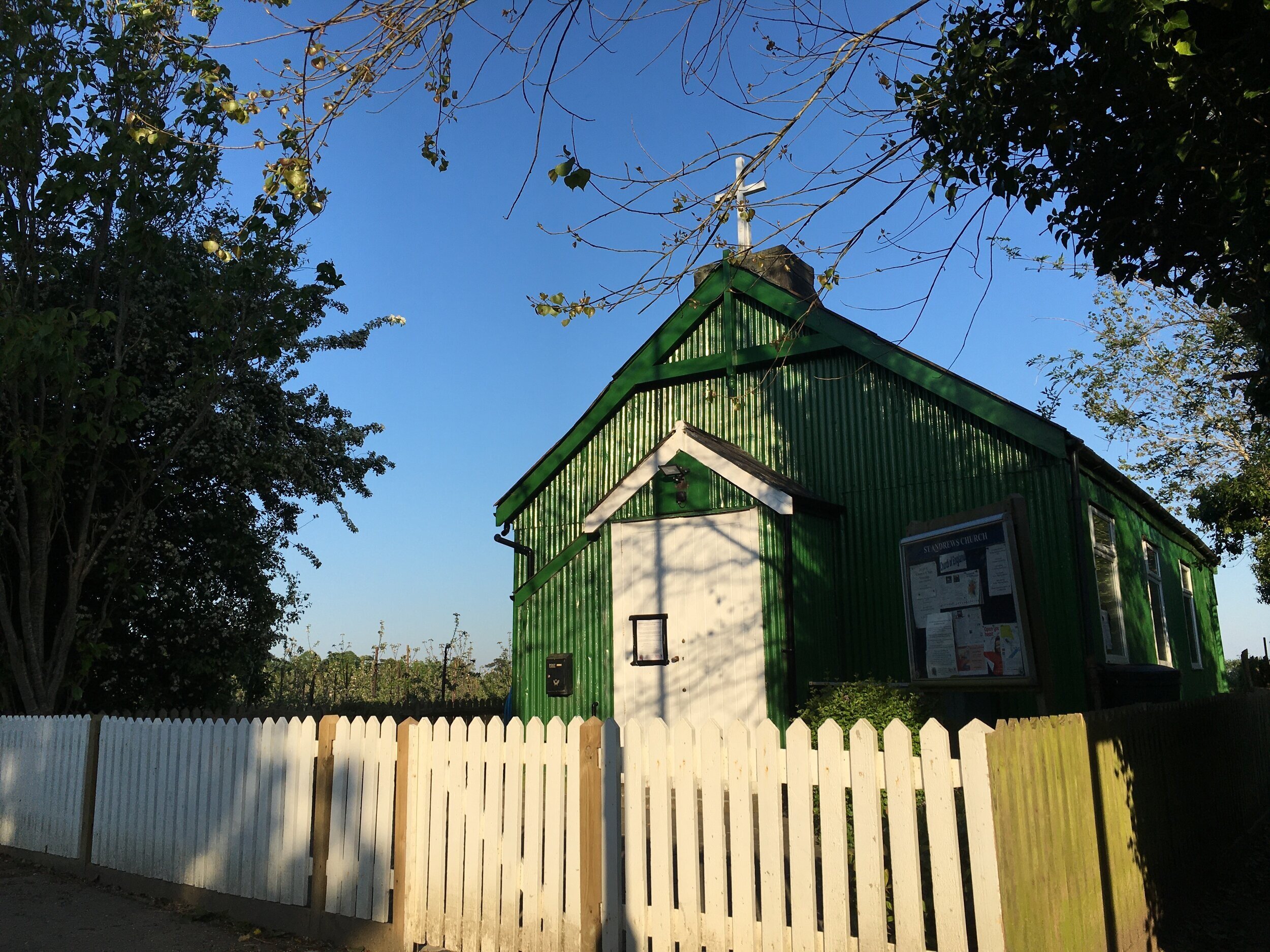
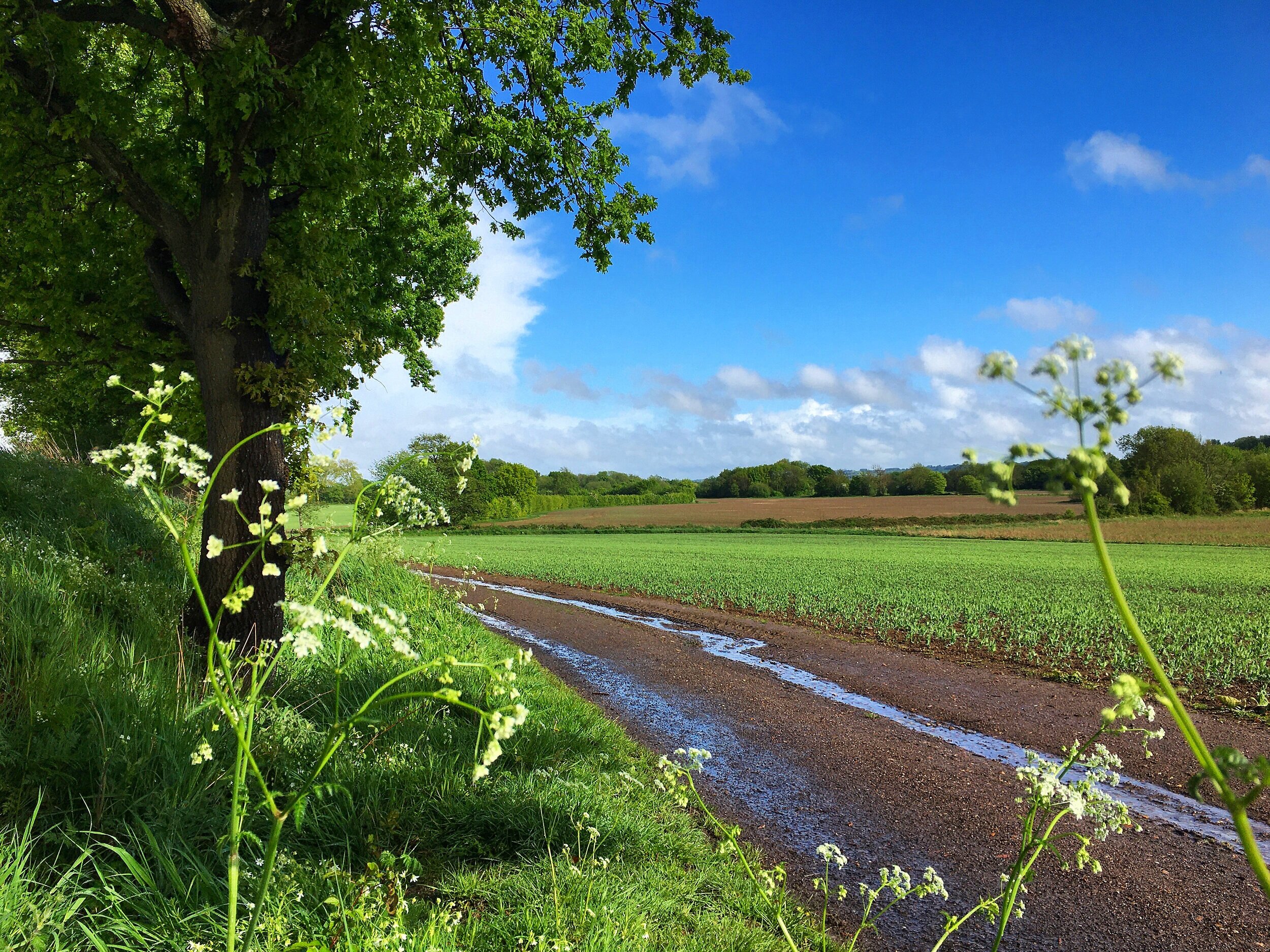
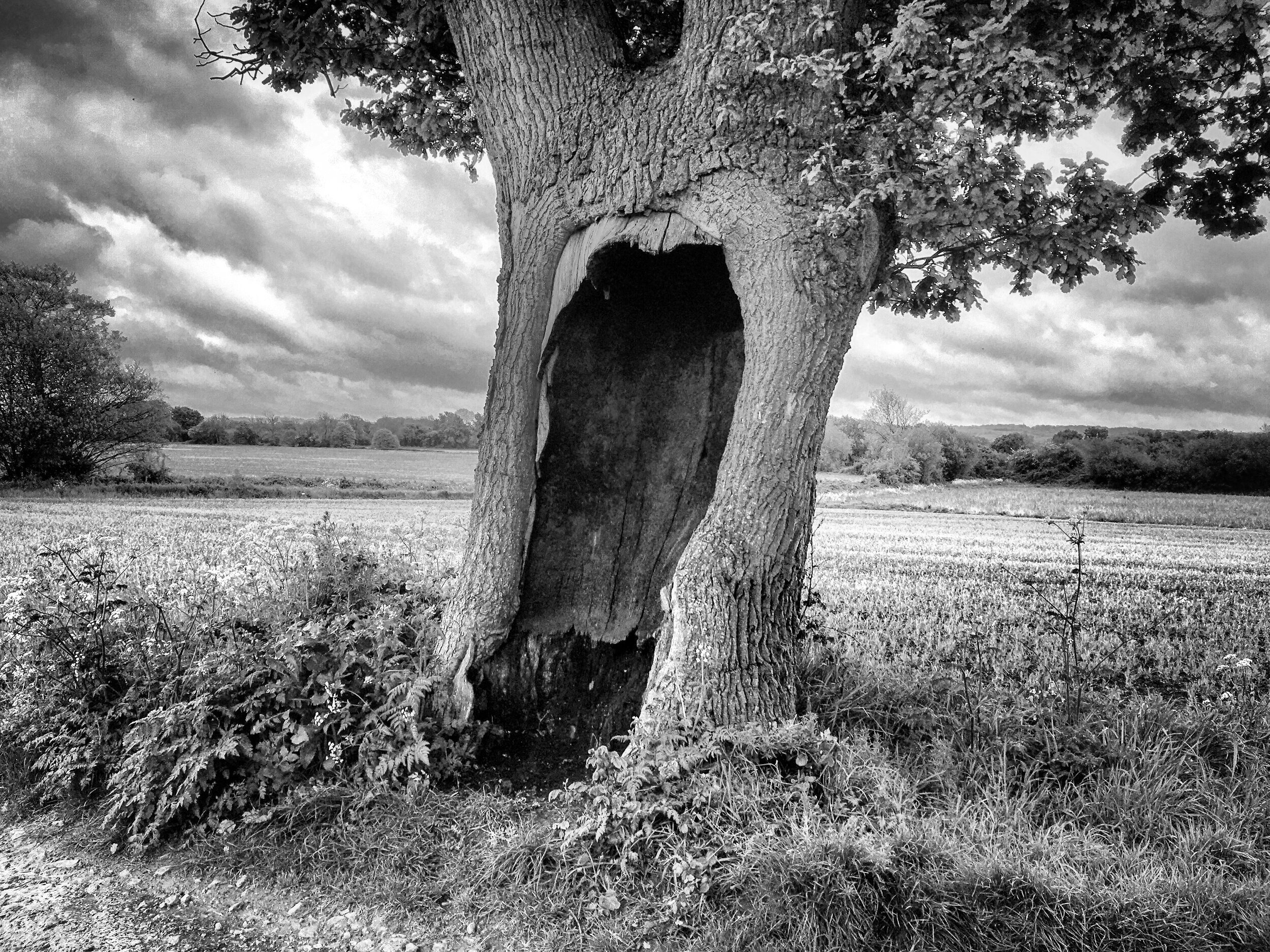


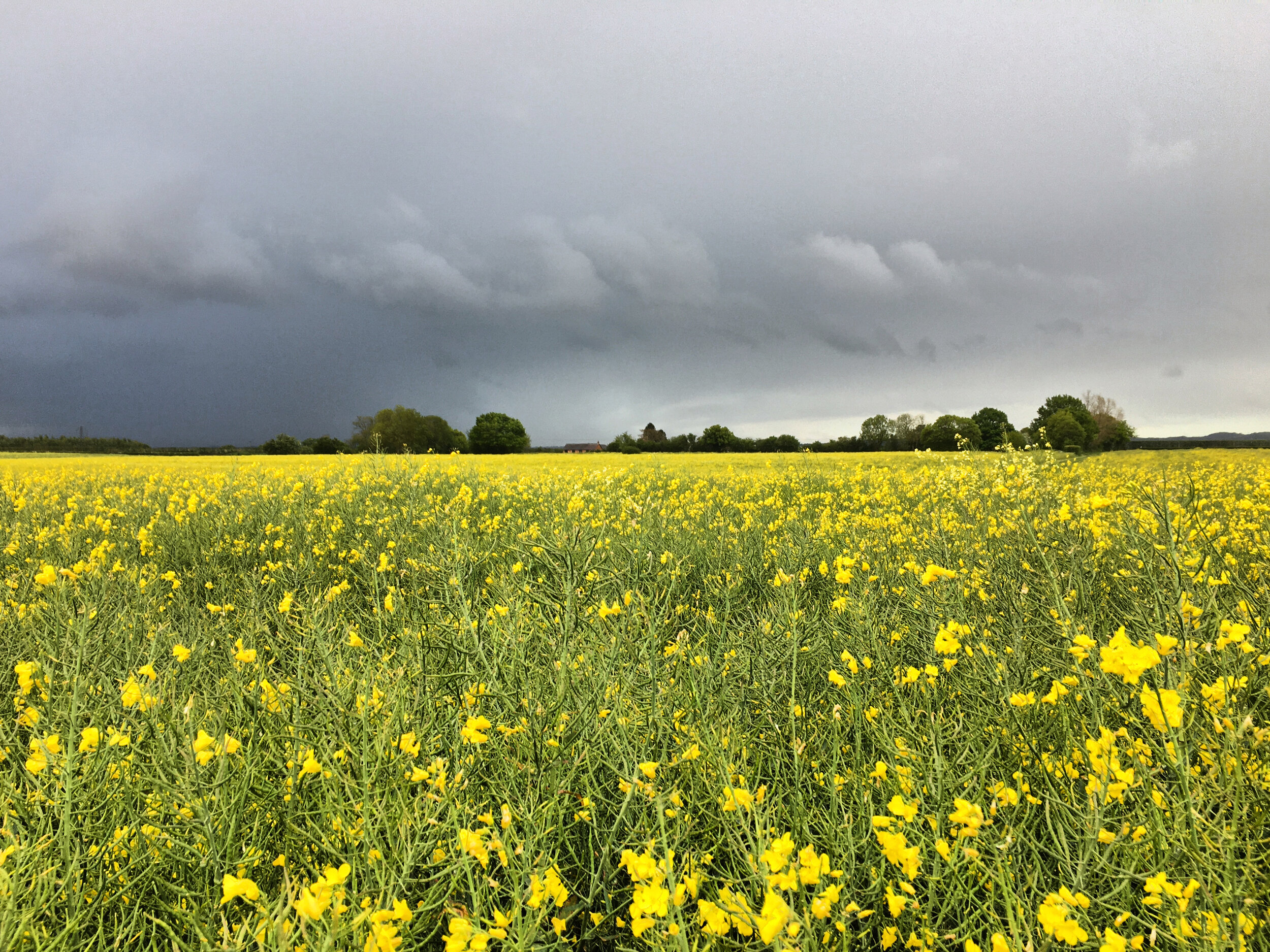

After weeks of sunshine, the glorious weather we had enjoyed throughout lock down had come to an abrupt halt. Lightning lit up the skies and rain pelted against the windows. My new found enthusiasm for walking had been dampened to say the least.
As I sat in my pyjamas watching Star Wars, my wife mentioned that a few of the local Mums had been asking for walks originating from North Tonbridge. I didn’t really know where to start but had seen some beautiful pictures of a friends daily exercise that began from this part of town. Reluctantly digging out my raincoat I plodded off into the storm, heading for a walk far, far away.
The rain eased off, and when the sun came out, the endless fields and orchards I walked through were glistening with raindrops and looking lusher than ever. The route was the epitome of traditional Kent life, completed by the working farm and the old village pub at Golden Green which was once my local.
I re-walked this route three days in a row, each time trying to put my finger on how best to describe the sights I had seen but kept drawing a blank. It was only when I was back at the kitchen table hammering away at the laptop that I recognised the TV theme tune resonating from the lounge, “The Darling Buds of May”. Once again I was taken back to beautiful Kent countryside, farm houses, oasts and familiar faces, in a blast of nostalgia.
If you are looking for your own slice of traditional Kent life, then this walk is ‘perfick’!
This is a circular walk from the Carpenters Arms but there is also the option to begin your walk from St Andrews in the Higham area of North Tonbridge. I have included downloadable directions and a PDF for both options below.
The Carpenters Arms
If beginning your walk at the Carpenters Arms, turn left out of the pub, heading towards Golden Green. Walk down the road with care for 50 metres until you see a large metal gate and a concrete footpath marker on your right.
Pass through the gate and trace the edge of the field heading South West. Keep going under the oak trees, (there will be a pond hidden to your left) and continue along the edge of the field.
Walking under the oak tree
At the end of the second field the path crosses a track. Walk straight ahead, through the bushes and across the narrow bridge. There will be a large pond to your left and a little stream to your right.
Keep going, squeezing between the wall and the remains of a stile. The path leads you into a field overgrown with brambles, it’s not the best spot for foraging come blackberry picking season, but it will keep you ticking over until a big pub lunch.
Rusty kissing gate, near Great Fish Hall
Pass through the rusty kissing gate and at the end of this path you will reach a newer wooden gate. At this point turn left down the driveway walking past Great Fish Hall, a grade II listed mansion.
The current property only dates back to the 18th century, but the name Fish Hall dates all the way back to 1295. This was when Gilbert De Clare, Earl of Gloucester (the then owner of Tonbridge Castle), granted the surrounding land to John De Fisher, along with the right to fish freely in all of the rivers, lakes and ponds under De Clare’s jurisdiction.
De Clare may sound generous but the “Red Earl” was a fierce and at times brutal character. You can read more about his chequered history here.
At the end of the drive turn right along the concrete path and pass through another kissing gate, turning right again and walking past the pile of manure until you meet the farm track. It’s at this point that you will meet the path from St Andrews.
The hedge in the background is where the two paths meet…
Turn left passing alongside the hedge. This is a beautiful patchwork of countryside where ribbons of woodland and hedgerows run between the fields.
By 1900 the Fish Hall estate was owned by Mr Albert Edward Peter, a private landowner and dedicated christian, that also encouraged his workers to follow Gods word. On warm summer days they would congregate in the orchard and in winter or wet weather they would worship in the lodge of Fish Hall.
The hollow tree
Continue past the hollow tree and then turn left at the end of the track. Look through the trees to your left and you will see a magnificent fishing lake. In spring and summer lily pads smother the surface lending it the serenity of a Monet painting.
It was this very lake that Mr Peters nearly lost his 4 year old daughter to in the winter of 1901. Young Gertrude had been skating on the surface when the ice cracked and gave way below her. The little girl was pulled unconscious from the icy water by the estates workers but was fortunate enough to make a full recovery from a severe bout of hypothermia.
Fish Hall Lake
Attributing his daughters recovery to the power of prayer and by way of thanking his staff Mr Peters later bought a small disused chapel to be used as a permanent place of worship for his workers. The chapel was moved from Brighton to Tonbridge and then assembled in the orchard on nearby Hadlow Road before opening in 1911.
Follow the track round until it reaches the hedgerow. At this point take the path that branches off to the right. Stay on this path with the hedge to your left and the field to your right. In the summer this field will be brimming with peas.
Pea field near Fish Hall farm
The Fish Hall estate was sold by Mr Peter in 1916. He sold all of the estate with the exception of the chapel and the patch of orchard that it sat upon. The little green church is still in use to this day and is now better known as St Andrews, part of Tonbridge Parish church. You can read more about the church and its history here.
Saint Andrews church, Tonbridge
Walk straight for 200 metres and then continue into the orchard, before crossing the little bridge into another larger one.
These orchards, along with the fields you have just walked through, are currently owned and managed by the Hadlow Estate. These are some of the 200 acres of fruit gardens owned and managed by the family, along with significant arable fields and woodland.
The path will lead you past endless lines of apple trees, sheltered by looming columns of silver birch. In spring these are lit up with vibrant blooms of pink and white blossom, which coats the ground with snowy flowers after even the most delicate of winds. The birch may not protect the blossom but is an effective wind break for the apples.
A bee amongst the orchards
At the end of the trees the path meets another track. Turn left at the white oil drum and walk up towards the farm. Once more you will find yourself surrounded by orchards as two plantations meet.
Come September these trees will be laden with apples and the runs will be buzzing with workers collecting the harvest. Over 20 million apples are grown each year on the Hadlow Estate, with the bulk of them coming from this farm.
Just before the track reaches the barns, take a diagonal right between the silver birch trees and the farm. The yard on your left is crammed full of tractors and machinery, but its the towering stacks of apple boxes and cavernous storage sheds that give you an indication of just how big an operation is being run here.
Hadlow Place Farm yard
Just before the end of this path, turn right down the path with the static caravans to your left. These are home to a small army of seasonal workers, responsible for maintaining the orchards and collecting the harvest.
Follow this path to the end and round to the left, walking through a gap in the hedge. Then continue straight on, passing the white house and walking along the top of the orchard. The apples grown here are familiar varieties including Bramley, Cox, Gala and Golden Delicious.
Follow the path, keeping the main road running to your left and the fruit trees on your right. After a short distance you will see the village sign for Golden Green peeping above the hedgerow. At this point, keep your eye out for a hole in the hedge.
Static caravans, Hadlow Place Farm
Once you find the hole, cross the road with care and walk along past the cottages until you reach The Bell Inn. This is a lovely traditional village pub with a warm welcome and a quaint beer garden to the rear. The new owners spent lock down refurbishing the pub, so it’s well worth a drinks stop en route if you wish to pop in for a cider or an apple juice!
The Bell Inn, Golden Green
The pub is hundreds of years old and has a long history of its own. In 1853 it was the scene of an inquest for the nearby tragedy at Hartlake Bridge, where 30 hop pickers died after their wagon crashed into the river. The Orchards and river song walk crosses this bridge and takes you past a memorial plaque commemorating the accident.
Whilst you are passing through the village keep an eye out for the Golden Green mission church across the road. Like St Andrews this is a ‘tin tabernacle’, a little church made from corrugated iron. It was gifted to the Vicar and church wardens at nearby Hadlow by Sir Osmond D’Avigdor Goldsmid - father of Henry, who you may recall from the Goldsmid trail. There are only around 100 of these little metal churches left in England and even fewer that are still in active use. The church now doubles as a village hall and was given grade II listed status in 1990. You can read more about tin tabernacles here.
Golden Green Mission church
When ready to continue your walk, turn left after the pub into Victoria road and walk for 200 metres until you reach the stream. I describe this as a stream, but it’s actually the River Bourne. To add to the confusion, Bourne means intermittent stream - keep up! It begins its journey in Ightham, near Sevenoaks and runs for 10 miles as far as East Peckham (the neighbouring village to Golden Green)before flowing into the River Medway.
Just before the bridge, take the path to your left and follow this until you come to a footbridge. Cross over into the field and then turn left, tracking the river Westwards.
The Bourne isn’t as wide or long as the Medway, meaning its not navigable, but size isn’t everything. For hundreds of years it was fast enough to power twelve watermills along its route. The mills produced a mixture of paper and corn, but gradually died out as the industrial revolution gathered momentum. The last remaining mill is Goldhill Mill, and is just across the river from the footbridge you walked across. The mill has its machinery intact but is no longer operational. You can see a full list of the mills and their uses here.
Goldenhill Mill, Golden Green
To your right there is a fine view of Hadlow Tower. This is all that remains of a grand castle that was built in 1780, although the tower wasn’t added until 1852. If you are still unsure of the rumours that I alluded to in one of the previous walks, then you have got another excuse to visit the Bell, the locals will fill you in.
Once you reach the fence at the end of the field, cross back over the river using the large wooden bridge and follow the path uphill between the field and the paddock.
Wooden bridge, over the River Bourne
Keep going until you see a little chain gate on your right. Pass through this and then turn left, walking up the driveway before turning right into Blackmans Lane.
Continue along the road until you see a footpath on your left. Take this path and walk along the edge of the field heading towards the oast houses in the distance. Keep looking back for more impressive views of Hadlow Tower.
Looking back to Hadlow Tower
When the paths cross over keep going straight towards the oast houses, following the grass track between the two fields. Come Spring these will be a sea of bright yellow rapeseed (canola), making for stunning pictures, albeit a nightmare for hay fever sufferers!
Rapeseed was first planted in the UK by the Romans. It’s unfortunate name loosely translates as turnip in Latin, which makes more sense when you realise it is a member of the brassica family of vegetables. This also explains the strong cabbage smell it gives off.
Horse chestnut tree amongst fields of canola.
Once you reach Faulkners Oasts turn left and follow the path through more canola fields until you reach Three Elm Lane. Turn right and walk up the road with care for 400 metres, until you reach the Carpenters once more.
Faulkners Oasts
If ending your walk here, great, enjoy! The Carpenters Arms serves excellent food. Its best to make a reservation, especially on a Sunday but if you are just stopping for a drink, they have lovely terrace at the front and rear of the pub, in addition to a small bar.
If continuing back to St Andrews, then you will need to follow the steps from the pub that are listed at the start of the walk. A downloadable PDF map and directions for both options can be found below.
For the alternative start point from St Andrews please click on the button below.
Thank you to my best friend whose daily walks past the ‘green church’ and love of the Carpenters gave me the inspiration for this walk.
